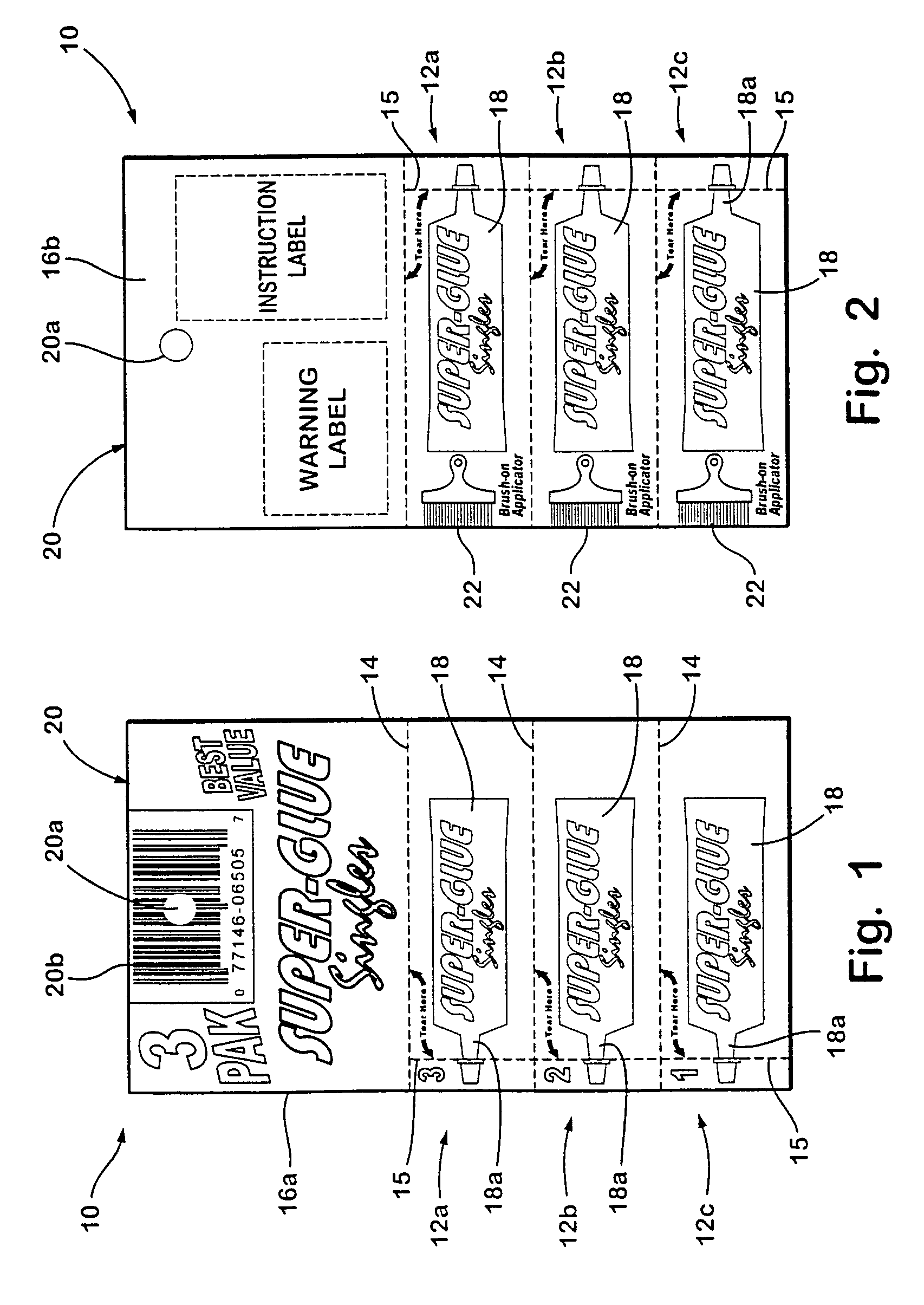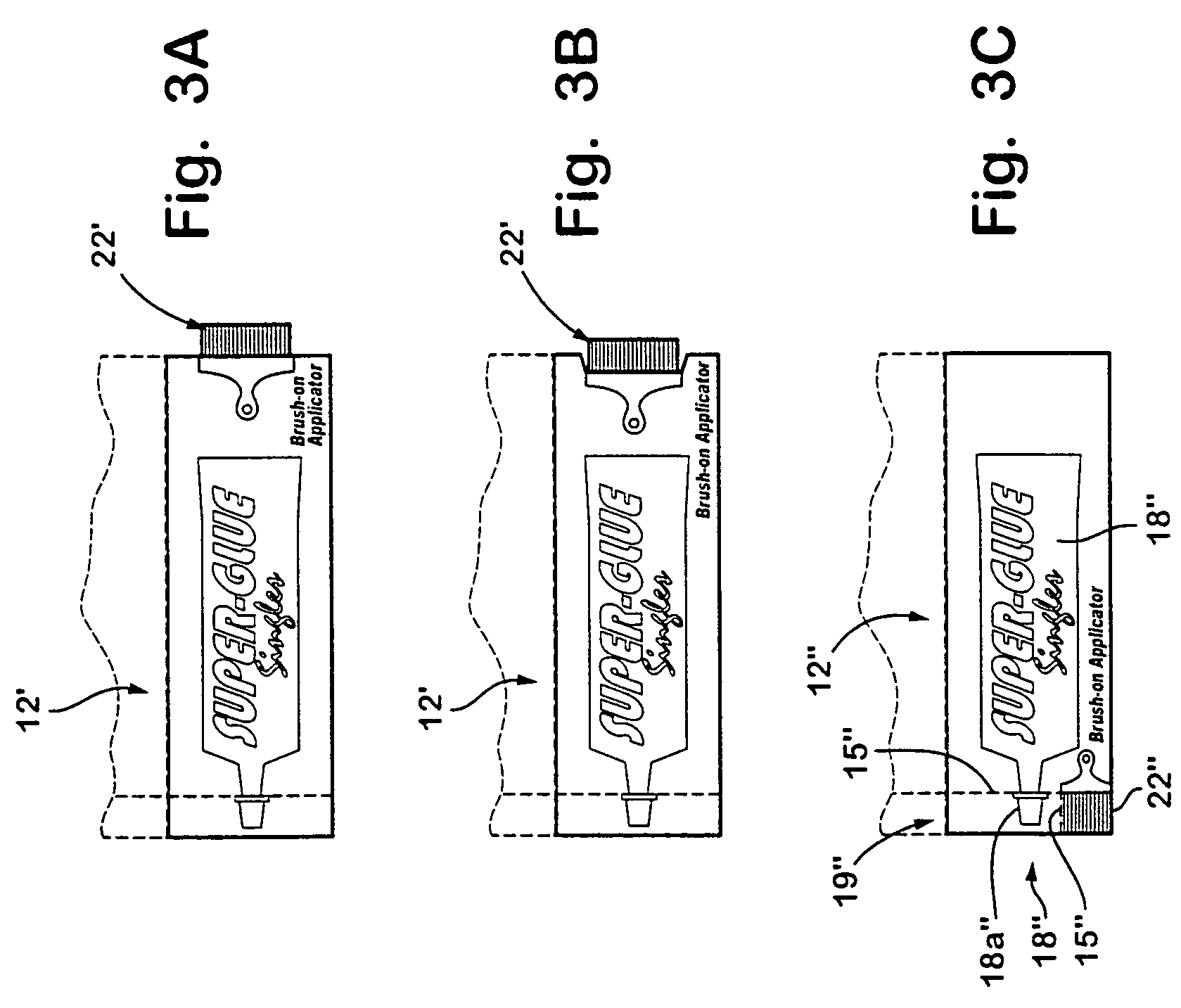Container for flowable products
a technology for containers and products, applied in the field of containers, can solve the problems of user's hands spilling the contents of the packet onto their fingers, undesirable options, and the use of such containers as storage vessels has suffered, so as to facilitate the opening of the pouch and applying the contents, and reduce the price
- Summary
- Abstract
- Description
- Claims
- Application Information
AI Technical Summary
Benefits of technology
Problems solved by technology
Method used
Image
Examples
Embodiment Construction
[0070]Referring now to the drawings and the illustrative embodiments depicted therein, a compartmentalized container 10 includes and defines a plurality of single use dispensers 12a, 12b, 12c (FIGS. 1 and 2), such as for adhesive or other flowable material. Each of the single use adhesive dispensers 12a, 12b, 12c has a cavity or pocket 18 for containing a small amount of adhesive therein. The adhesive dispensers may be separated from one another and opened to dispense adhesive from the respective cavity. The adhesive dispensers may contain a small amount of quick drying adhesive, such as ethyl cyanoacrylate or methyl cyanoacrylate or the like, which cures or dries or bonds quickly in the presence of moisture, or an anaerobic type adhesive, which cured in the absence of air, or other types of quick drying adhesives. After the single use application of the adhesive, the dispenser may be discarded or thrown away, with minimal waste of the adhesive. Alternately, the container may contai...
PUM
| Property | Measurement | Unit |
|---|---|---|
| Flow rate | aaaaa | aaaaa |
| Color | aaaaa | aaaaa |
| Width | aaaaa | aaaaa |
Abstract
Description
Claims
Application Information
 Login to View More
Login to View More - R&D
- Intellectual Property
- Life Sciences
- Materials
- Tech Scout
- Unparalleled Data Quality
- Higher Quality Content
- 60% Fewer Hallucinations
Browse by: Latest US Patents, China's latest patents, Technical Efficacy Thesaurus, Application Domain, Technology Topic, Popular Technical Reports.
© 2025 PatSnap. All rights reserved.Legal|Privacy policy|Modern Slavery Act Transparency Statement|Sitemap|About US| Contact US: help@patsnap.com



